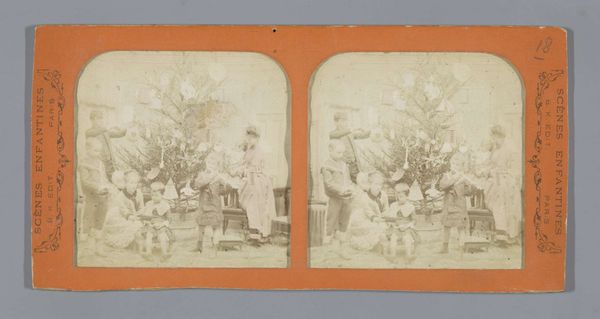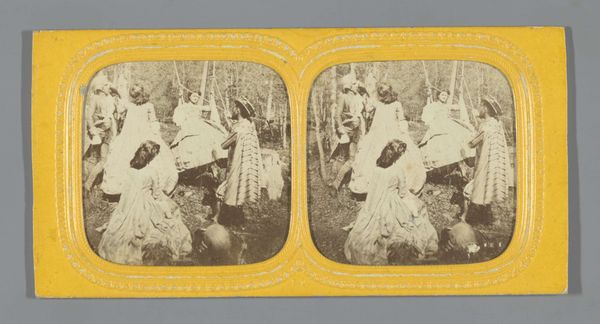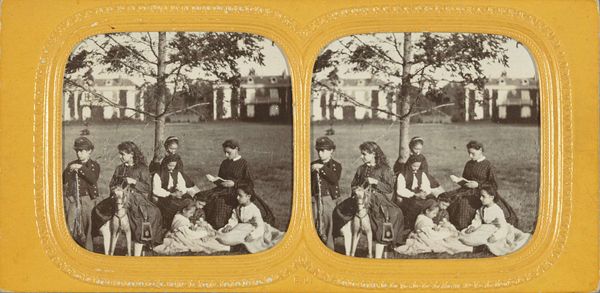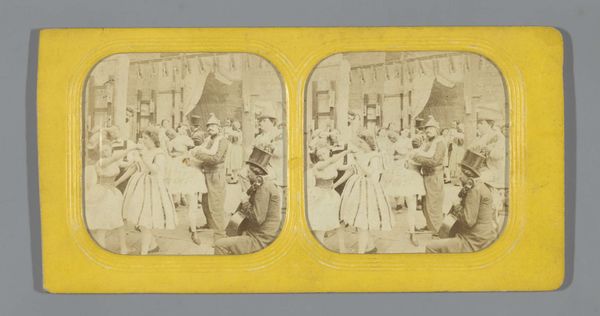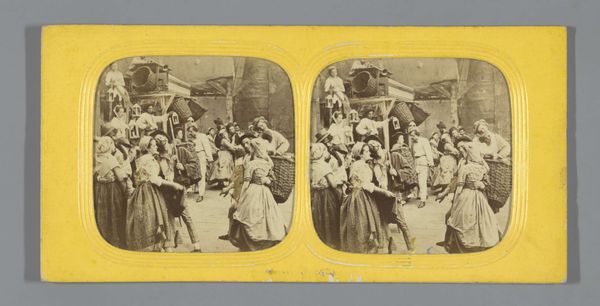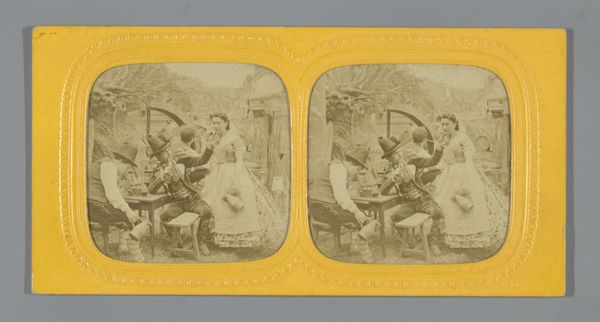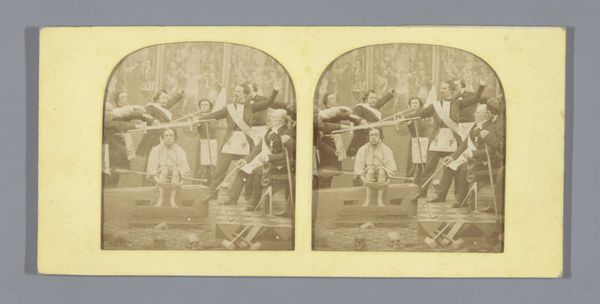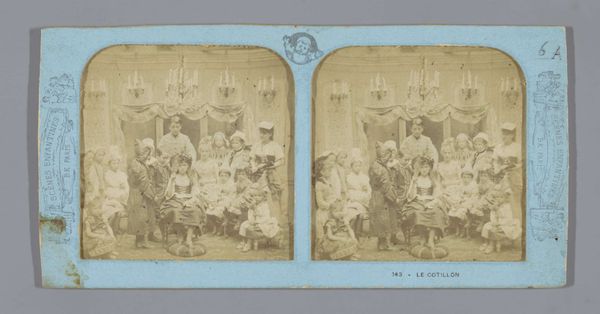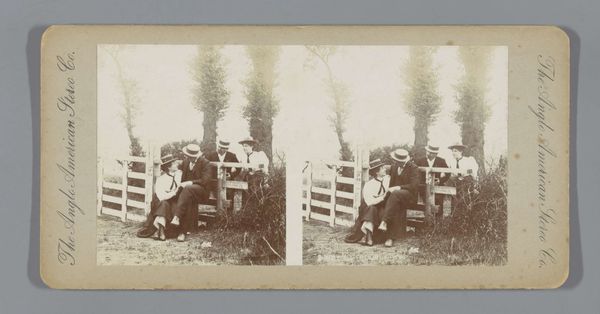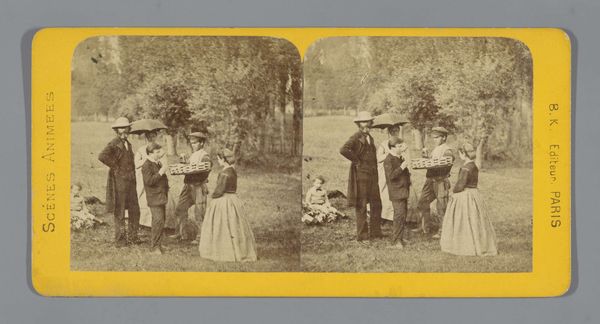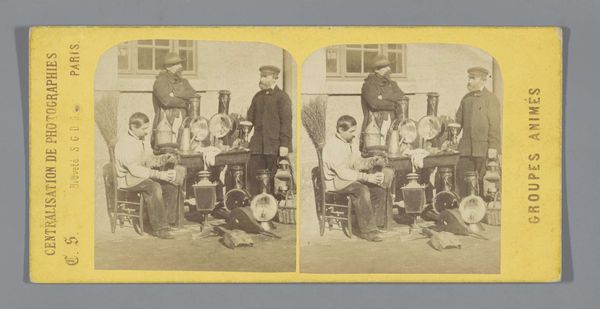
photography
#
photography
#
group-portraits
#
genre-painting
Dimensions: height 87 mm, width 174 mm
Copyright: Rijks Museum: Open Domain
Editor: This is "Gezelschap in bos," a photograph by Jules Marinier, likely created between 1864 and 1880. It presents a group of people gathered outdoors, and there's something staged about it, like they’re performing for the camera rather than genuinely relaxing. What historical context helps us interpret this kind of staged informality? Curator: That’s an interesting point. Group photography in the 19th century wasn’t just about documentation; it was also a performance of social status. These genre scenes, set in an idealized 'nature', speak to a growing bourgeois desire to display leisure and family values. How do you think the new availability of photography at the time impacted artistic and social conventions? Editor: I imagine it democratized portraiture to some extent, even if it was still an elaborate process. This particular image looks like a stereo card. It's presented as two identical images to create a sense of depth when viewed through a stereoscope. This reinforces that these images were objects of mass consumption rather than singular artworks, right? Curator: Precisely. These stereo cards were hugely popular, bringing three-dimensional images into middle-class homes, effectively turning everyone into art collectors. Consider the act of viewing: families would gather to view these images, fostering a shared experience. Think about how photography impacted the role of paintings. Genre paintings might be interpreted differently as people got more used to photography. How might paintings evolve in the context of widespread access to photography? Editor: That's a really great point! Maybe the paintings move further away from representing reality literally because they are more focused on emotions. The relationship between the rise of photography and, for example, impressionism, could then be related to an evolution in art's goal due to shifts in cultural consumption, especially concerning representation! Thank you. Curator: Exactly. So, what appeared to be a simple domestic photo ends up mirroring societal shifts and cultural transformations through its very existence and means of distribution. It underscores the complex interaction of art and public life during the period. It really allows us to look into the context of our society through photography!
Comments
No comments
Be the first to comment and join the conversation on the ultimate creative platform.
